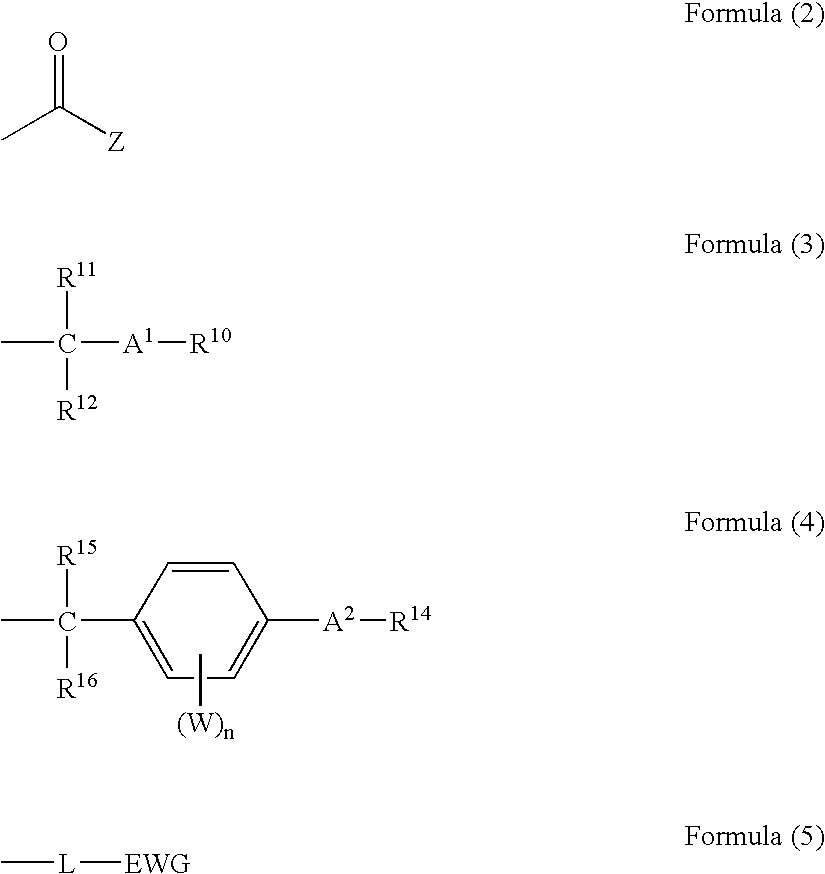Silver halide emulsion and silver halide photographic light-sensitive material
a silver halide and light-sensitive material technology, applied in the field of silver halide emulsion, can solve the problems of increased sensitivity during storage, unsatisfactory results, and softening of gradation
- Summary
- Abstract
- Description
- Claims
- Application Information
AI Technical Summary
Benefits of technology
Problems solved by technology
Method used
Image
Examples
example 1
[0237] (Preparation of Blue-Sensitive Layer Emulsion BH-1)
[0238] Using a method of adding silver nitrate and sodium chloride simultaneously to a deionized distilled water containing a deionized gelatin to mix these, under stirring, cubic high silver chloride grains were prepared. In the course of this preparation, Cs2[OsCl5(NO)] was added, over the step of from 60% to 80% addition of the entire silver nitrate amount. Over the step of from 80% to 90% addition of the entire silver nitrate amount, potassium bromide (1.5 mol % per mol of the finished silver halide) and K4[Fe(CN)6] were added. Over the step of from 83% to 88% addition of the entire silver nitrate amount, K2[IrCl6] was added. Over the step of from 92% to 98% addition of the entire silver nitrate amount, K2[IrCl5(H2O)] and K[IrCl4(H2O)2] were added. At the completion of 94% addition of the entire silver nitrate amount, potassium iodide (0.27 mol % per mol of the finished silver halide) was added under vigorous stirring. T...
example 2
(Preparation of Seed Emulsion 1)
[0266] One liter of a dispersion medium solution, containing 0.38 g of KBr and 0.5 g of a low-molecular weight gelatin (molecular weight, 15,000), was kept in a reactor at 40° C., and then thereto was added 20 ml of a 0.29 mol / l aqueous silver nitrate solution, and 20 ml of a 0.29 mol / l aqueous KBr solution, simultaneously, over 40 seconds, with stirring. After the addition was finished, 22 ml of a 10% KBr solution was added to the mixture, which was then heated to 75° C. After the temperature was raised, an aqueous gelatin solution (60° C.) of 35 g of trimellitated gelatin in 250 ml of water was added to the dispersion medium solution. At this time, the solution was adjusted to pH 6.0. Then, a 1.2 mol / l aqueous silver nitrate solution and a 1.2 mol / l aqueous KBr solution were added, simultaneously, to the above solution. At this time, silver iodide fine-grains were added at the same time, in an amount that would make the proportion of silver iodide...
PUM
 Login to View More
Login to View More Abstract
Description
Claims
Application Information
 Login to View More
Login to View More - R&D
- Intellectual Property
- Life Sciences
- Materials
- Tech Scout
- Unparalleled Data Quality
- Higher Quality Content
- 60% Fewer Hallucinations
Browse by: Latest US Patents, China's latest patents, Technical Efficacy Thesaurus, Application Domain, Technology Topic, Popular Technical Reports.
© 2025 PatSnap. All rights reserved.Legal|Privacy policy|Modern Slavery Act Transparency Statement|Sitemap|About US| Contact US: help@patsnap.com



